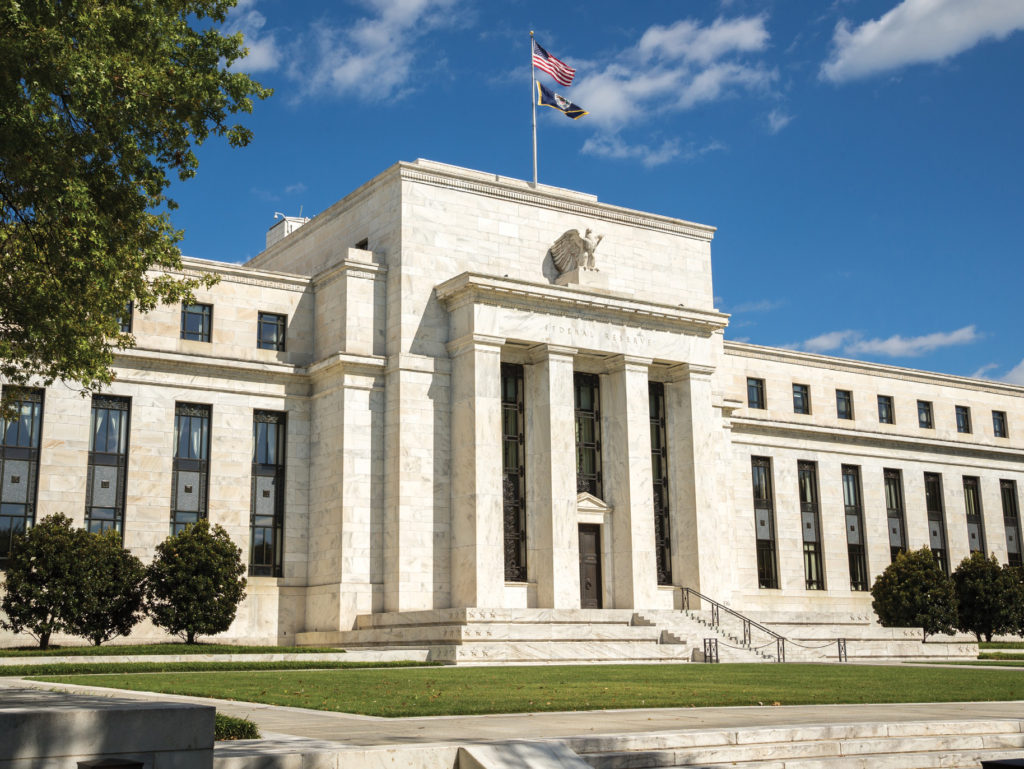The prospect that the US Federal Reserve will start exiting zero policy rates later this year has fuelled growing fear of renewed volatility in emerging economies’ currency, bond, and stock markets. The concern is understandable: when the Fed signalled in 2013 that the end of its quantitative-easing (QE) policy was forthcoming, the resulting “taper tantrum” sent shock waves through many emerging countries’ financial markets and economies.
Indeed, rising interest rates in the United States and the ensuing likely rise in the value of the dollar could, it is feared, wreak havoc among emerging markets’ governments, financial institutions, corporations, and even households. Because all have borrowed trillions of dollars in the last few years, they will now face an increase in the real local-currency value of these debts, while rising US rates will push emerging markets’ domestic interest rates higher, thus increasing debt-service costs further.
But, although the prospect of the Fed raising interest rates is likely to create significant turbulence in emerging countries’ financial markets, the risk of outright crises and distress is more limited. For starters, whereas the 2013 taper tantrum caught markets by surprise, the Fed’s intention to hike rates this year, clearly stated over many months, will not. Moreover, the Fed is likely to start raising rates later and more slowly than in previous cycles, responding gradually to signs that US economic growth is robust enough to sustain higher borrowing costs. This stronger growth will benefit emerging markets that export goods and services to the US.
Another reason not to panic is that, compared to 2013, when policy rates were low in many fragile emerging economies, central banks already have tightened their monetary policy significantly. With policy rates at or close to double-digit levels in many of those economies, the authorities are not behind the curve the way they were in 2013. Loose fiscal and credit policies have been tightened as well, reducing large current-account and fiscal deficits. And, compared to 2013, when currencies, equities, commodity, and bond prices were too high, a correction has already occurred in most emerging markets, limiting the need for further major adjustment when the Fed moves.

Above all, most emerging markets are financially more sound today than they were a decade or two ago, when financial fragilities led to currency, banking, and sovereign-debt crises. Most now have flexible exchange rates, which leave them less vulnerable to a disruptive collapse of currency pegs, as well as ample reserves to shield them against a run on their currencies, government debt, and bank deposits. Most also have a relatively smaller share of dollar debt relative to local-currency debt than they did a decade ago, which will limit the increase in their debt burden when the currency depreciates. Their financial systems are typically sounder as well, with more capital and liquidity than when they experienced banking crises. And, with a few exceptions, most do not suffer from solvency problems; although private and public debts have been rising rapidly in recent years, they have done so from relatively low levels.
In fact, serious financial problems in several emerging economies – particularly oil and commodity producers exposed to the slowdown in China – are unrelated to what the Fed does. Brazil, which will experience recession and high inflation this year, complained when the Fed launched QE and then when it stopped QE. Its problems are mostly self-inflicted – the result of loose monetary, fiscal, and credit policies – all of which must now be tightened – during President Dilma Roussef’s first administration.
Russia’s troubles, too, do not reflect the impact of Fed policies. Its economy is suffering as a result of the fall in oil prices and international sanctions imposed following its invasion of Ukraine – a war that will now force that country to restructure its foreign debt, which have been rendered unsustainable by the added military expenditure, a severe recession, and currency depreciation.
Likewise, Venezuela was running large fiscal deficits and tolerating high inflation even when oil prices were above $100 a barrel; at current prices, it may have to default on its public debt, unless China decides to bail out the country. Similarly, some of the economic and financial stresses faced by South Africa, Argentina, and Turkey are the result of poor policies and domestic political uncertainties, not Fed action.
In short, the Fed’s exit from zero policy rates will cause serious problems for those emerging market economies that have large internal and external borrowing needs, large stocks of dollar-denominated debt, and macroeconomic and policy fragilities. China’s economic slowdown, together with the end of the commodity super-cycle, will create additional headwinds for emerging economies, most of which have not implemented the structural reforms needed to boost their potential growth.
But, again, these problems are self-inflicted, and many emerging economies do have stronger macro and structural fundamentals, which will give them greater resilience when the Fed starts hiking rates. When it does, some will suffer more than others; but, with a few exceptions lacking systemic importance, widespread distress and crises need not occur.i
Nouriel Roubini is Chairman of Roubini Global Economics and a professor at NYU’s Stern School of Business.
Copyright: Project Syndicate, 2015.
www.project-syndicate.org































